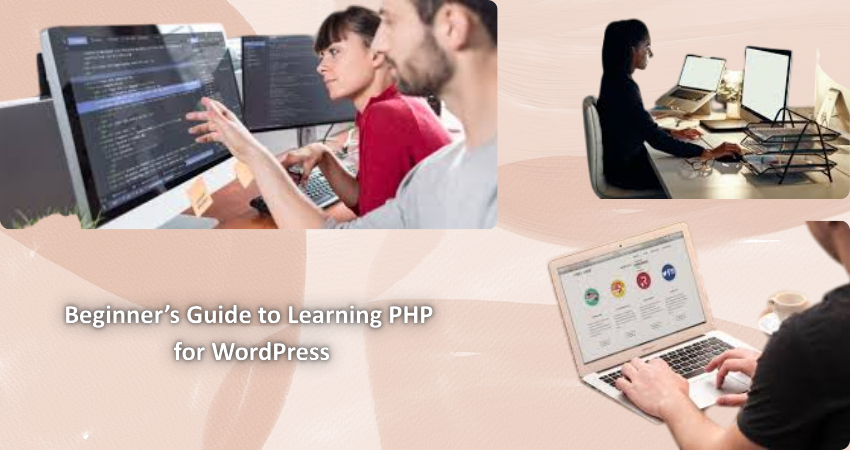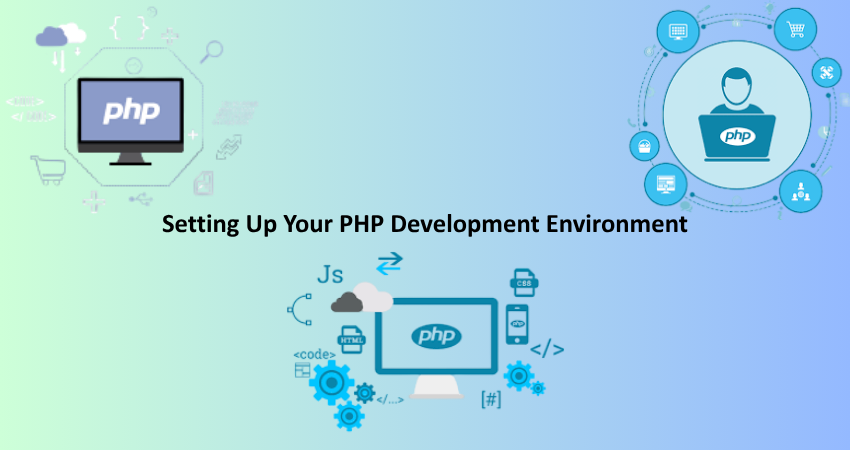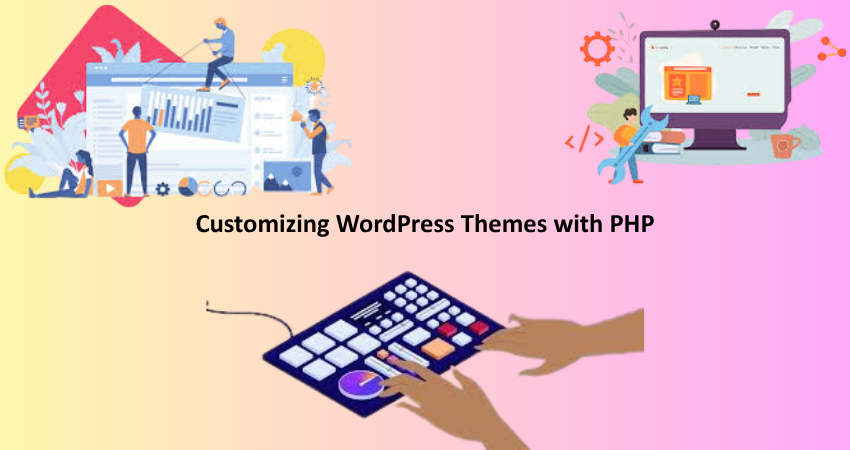
Introduction
WordPress is the popular CMS (Content Management System) worldwide that accounts for more than 40% of all websites on the web. Well, WordPress is known for its ease of use and user-friendly interfaces, while on the other hand, WordPress themselves are those being in PHP-a powerful scripting language. Learning PHP becomes mandatory if you want to customize or code your own beyond basic themes and plugins. Learning PHP for WordPress would allow a whole new set of possibilities for developing, designing, or even wondering beginners wanting to up their skills in web development.
It is also Hypertext Preprocessor, a server-side scripting language specifically dedicated to web development. Integration becomes smooth with HTML and database systems like MySQL, making it one of the strongest backs to create dynamic content platforms such as WordPress. This doesn’t mean that with WordPress, everything can be done without moving the fingers from the keyboard; it is as if the magic lies in touching the inner core with PHP. With the following guide, beginners will have the right starter pack with all the clear explanations and long with practical examples and guidance on where to start learning PHP specifically applied to WordPress.
What is PHP and Why It Matters for WordPress?
Understanding PHP’s Role in Web Development
PHP is a scripting language that typically runs on a web server, incorporating the backend logic of web applications. Also, PHP is unlike frontend languages like HTML and CSS, which signify how a webpage looks. PHP is all about how a webpage behaves. Whenever a user fills in the forms, logs in to a site, or views content being dynamically generated, all these functions are made possible by PHP. This language is widely supported and easy enough for the amateur, though the big platforms like WordPress still build up on it-the likes of Facebook and Wikipedia.
WordPress also does this-the querying of posts in a database, the submission of forms and the activation of plugins. Every time you visit any page of WordPress, PHP scripts are invoked in the background to serve the dynamic content. It is not only functionally beneficial but also indispensable for those who want to get into developing, customizing, or maintaining any WordPress-based site. A basic grasp of PHP also provides good help to the user in controlling his or her site, as well as troubleshooting conditions when plugins or themes just will not work.
PHP’s Integration with WordPress Core
At one end sits a core set of PHP files that define WordPress behavior, structure, and capability. The files govern how the WordPress interacts and communicates with its MySQL database, how themes get rendered, and how plugins are extended. If you have ever been inside the functions.php file of a WordPress theme or the main script of the plugin, you have already seen PHP in action. It handles the logic behind conditional displays, post loops, user authentication, and many other important things.
It means to a beginner that one could influence the way WordPress behaves by learning PHP. You need PHP whether writing a custom function in your theme’s functions.php, creating a shortcode, or developing a plugin. Selecting the most relevant parts of PHP to WordPress allows users to bypass unnecessary complication and get down to all the useful bits that make better sites.
Setting Up Your PHP Development Environment

Installing a Local Server: XAMPP, MAMP, or LocalWP
A local development environment is a prerequisite for writing and testing PHP code for WordPress. Unlike HTML and CSS pages that run natively through a browser, PHP requires a web server and database to function. You can set up a local server on your machine using popular tools such as XAMPP (cross-platform), MAMP (macOS), or LocalWP (designed for WordPress development) as they bundle PHP, MySQL, and Apache or Nginx into a single, package for easy use.
Setting up the online environment is fairly easy. You just install XAMPP on your computer. The next steps are to start up the Apache and MySQL modules, complete. That’s it. These servers build a localhost into which you can install WordPress and thereafter begin writing PHP codes away in a safe and isolated space. This feature enables any experiments with developing themes, creating plugins, or possibly just about learning PHP without putting the risk of failure on a live site.
Installing WordPress Locally for Practice
WordPress installation follows as soon as the local server is up. The most recent version should be downloaded from WordPress.org and copied into the appropriate folder of the local server installation. The htdocs folder will usually be the choice for XAMPP installations, while Users/username/Sites will be used in MAMP. Once a database is set up using phpMyAdmin, run the WordPress installation script through your browser and configure your local site.
This environment simulates a live WordPress website, but you can make mistakes, test functions, and break things without any consequence. It is indeed beginner-friendly because it promotes working around and exploration. You will be free to edit PHP files, install plugins, and test custom functions and get feedback right away. Gradually, you will build confidence in reading and writing PHP code in the WordPress environment, an important requisite for any real development competence.
Learning the Basics of PHP Syntax and Structure
PHP Tags, Variables, and Data Types
For example, the first line of the code reads: PHP code will be placed in these special tags <?php … ?>, which will tell the server to run anything inside as PHP. First steps a beginner should take in getting familiar with PHP completely lies in variables. The first thing about a variable is that it always starts with that sign known as a dollar sign ($) and can contain types of information such as string, numbers, or arrays. For example,
php Copy Edit
<?php
$greeting = “Hello, WordPress!”;
echo $greeting;
?>
Here, this echo will display what the variable $greeting holds. PHP is very rich in data types like string, integer, float, boolean, array, and object. Learning these types is the backbone because most of WordPress development concerns manipulations of just these types of data:
going through post titles, storing user credentials, or generating dynamic outputs by some conditions.
Another fine feature is case sensitivity in PHP. Variable names are case-sensitive; hence $Title and $title refer to two different variables. Keywords and functions are, however, not case-sensitive. This can seem baffling to a beginner, so maintaining a consistent naming approach is essential for writing coherent code, which also translates to easy debugging.
Conditional Statements and Loops
The most significant part of programming is controlling the flow of logic, here done within PHP by use of conditional statements (if, else, elseif and switch) and loops (for, while and foreach). These structures enable the code to make decisions and repeat actions, which is especially useful in WordPress. For example, this is how a common conditional checks whether a user is:
This code sample actually uses PHP to check if a user is logged in:
php
Copy
Edit
<?php
if ( is_user_logged_in() ) {
echo “Welcome back!”;
} else {
echo “Please log in.”;
}
?>
Control flow also plays a vital role in an application. For instance, the WordPress Loop is a while loop that checks for posts and allows them to be output using template tags. Mastering these control constructs in PHP will provide you with a basis for creating more complex and dynamic functions to your WordPress site.
Practical PHP Functions for WordPress Beginners
Using Built-in WordPress PHP Functions
Hundreds of built-in PHP functions in WordPress make it far easier to work with content, use media, manage users, and much more. Indeed, these functions are just ways of encapsulating some frequently required functionality into a shortcut. For instance, the title of a post can be fetched using get_the_title(), while the display of a navigation menu can be accomplished with wp_nav_menu(). It saves a lot of time on the part of any novice to understand which function to use and how.
Consider just a simple example that gives the name of the currently logged-in user:
php
Copy
Edit
<?php
$current_user = wp_get_current_user();
echo ‘Hello, ‘ . $current_user->display_name;
?>
It fetches the user’s detail using wp_get_current_user() and accesses the return property’s display_name. WordPress often returns objects or arrays, so one should know how to work with such data structures in PHP. The WordPress Developer Handbook contains every available function within a cumulative resource, plus the example of how and with which parameters it should be used.
Creating Custom PHP Functions
Now that you are aware of built-in functions, the next step is to make custom ones. Custom functionality allows you to wrap some logic for simple examples that you might want to use more than once throughout a theme or plugin:
<?php
function greet_user() {
$user = wp_get_current_user();
return “Hi,” . $user->display_name;
}
Introduction to Full Custom Functionality-Onedotone. $user->display_name;
}
echo greet_user();
?>
This custom function identifies the user and generates a personalized greeting. This would go into your theme’s functions.php file or one of your plugins. As a good rule, always name your functions in a unique way (such as prefixing them e.g. with mytheme_greet_user()) to avoid conflicts with other code. Writing reusable functions is a good practice in its own because it promotes clarity, maintainability, and performance for your code.
Customizing WordPress Themes with PHP

Editing the functions.php File
As modifications in PHP for your site are made in this file, functions.php is a file in WordPress theme that provides this option. Since it loads automatically with every page of your WordPress theme, adding custom functions, changing the default behaviors, and adding hooks become the best applications of it. For novices to WordPress, this is generally the first place to try PHP.
Here’s an example of adding a custom logo support feature:
php
Copy
Edit
<?php
function mytheme_custom_logo() {
add_theme_support(‘custom-logo’);
}
add_action(‘after_setup_theme’, ‘mytheme_custom_logo’);
?>
This code adds support for a custom logo, and the function is hooked into the after_setup_theme action. To be able to do this, you need to have a basic understanding of how actions and filters exist in WordPress, for they help developers change or extend the core without ever touching the original codebase. Mastering functions.php gives you the liberty to build any format of your customized site.
Using Template Tags and Conditional Logic
Numerous template tags are introduced in WordPress, and these are specialized PHP functions used to retrieve and display dynamic content. WordPress theme development is mainly based on the use of such tags as the_title(), the_content(), and the_permalink(). Such tags are placed inside your theme’s template files (index.php, single.php, etc.) so as to display data from the database in an appropriate format.
Conditional tags such as is_home(), is_single(), and has_post_thumbnail() are a means of deciding what to display and when. A brief example goes this way:
php
Copy
Edit
<?php if ( has_post_thumbnail() ) {
the_post_thumbnail(‘medium’);
} else {
echo ‘<img src=”/default-image.jpg” />’;
} ?>
Here, this snippet checks whether the post has a featured image and specifies displaying it if there is one; if not, it calls a default image. Conditioning template tags offer you the ability to create dynamic layouts that adjust in and out on a post type basis, user role basis, or page context basis—all administrative actions made possible via PHP.
Conclusion
Learning PHP is a revolutionary event in taking total command of his or her WordPress site. Even if it appears complicated at first, PHP’s syntax is easy to grasp, and it is easy to use with WordPress. With PHP, you will have an extraordinary experience in things like learning variables and loops, modifying themes, and building plugins, as with every PHP skill learned comes new possibilities for your site.
The guide has covered everything necessary: install the development environment, custom functions, and template tags. As you make more efforts and try different things, confidence in making constructive contributions to your WordPress site will grow. If your primary goal is to become a developer or freelancer, or just wanted some more customization power, PHP for WordPress is a training that goes a long way in flexibility, creativity, and control.